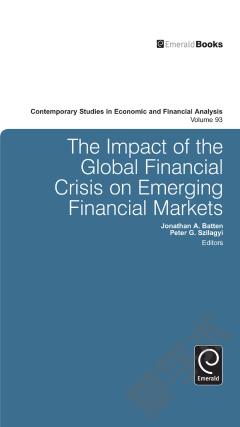Non-Linear Modeling of the Impact of the Crisis on the Interactions among Financial Markets and Macroeconomic Variables in CEE Countries
Following the last economic and financial crisis, there is strong motivation for academics to better explain the connection between the stock market and the macroeconomy. This book aims at fulfilling this need with an accent on the case of emerging markets in Central and Eastern Europe. The book generally focuses on nonlinear techniques. The book consists of several chapters, each using state-of-the-art techniques in modeling that address specific issues related to the focus of the book. The topics range from studying the transmission mechanism of monetary policy in CEE economies, to issues like the impact of quantitative easing on the emerging markets or network based approaches that advance our understanding of the financial relationships in these markets. The book also includes a paper on the wavelets modeling of the relationship between uncertainty and equity premium. Given the nature of the CEE economies, i.e. aspiring Euro Area members, a special chapter is dedicated to convergence issues and the nonlinear relationship between economic growth and finance. Overall, in the present context of the post-financial crisis, this book constitutes a step forward in the modeling of the linear and nonlinear relationships between the financial markets and the macroeconomy, especially in an unstable context and for the particular case of emerging economies.
{{comment.content}}








 京公网安备 11010802027623号
京公网安备 11010802027623号